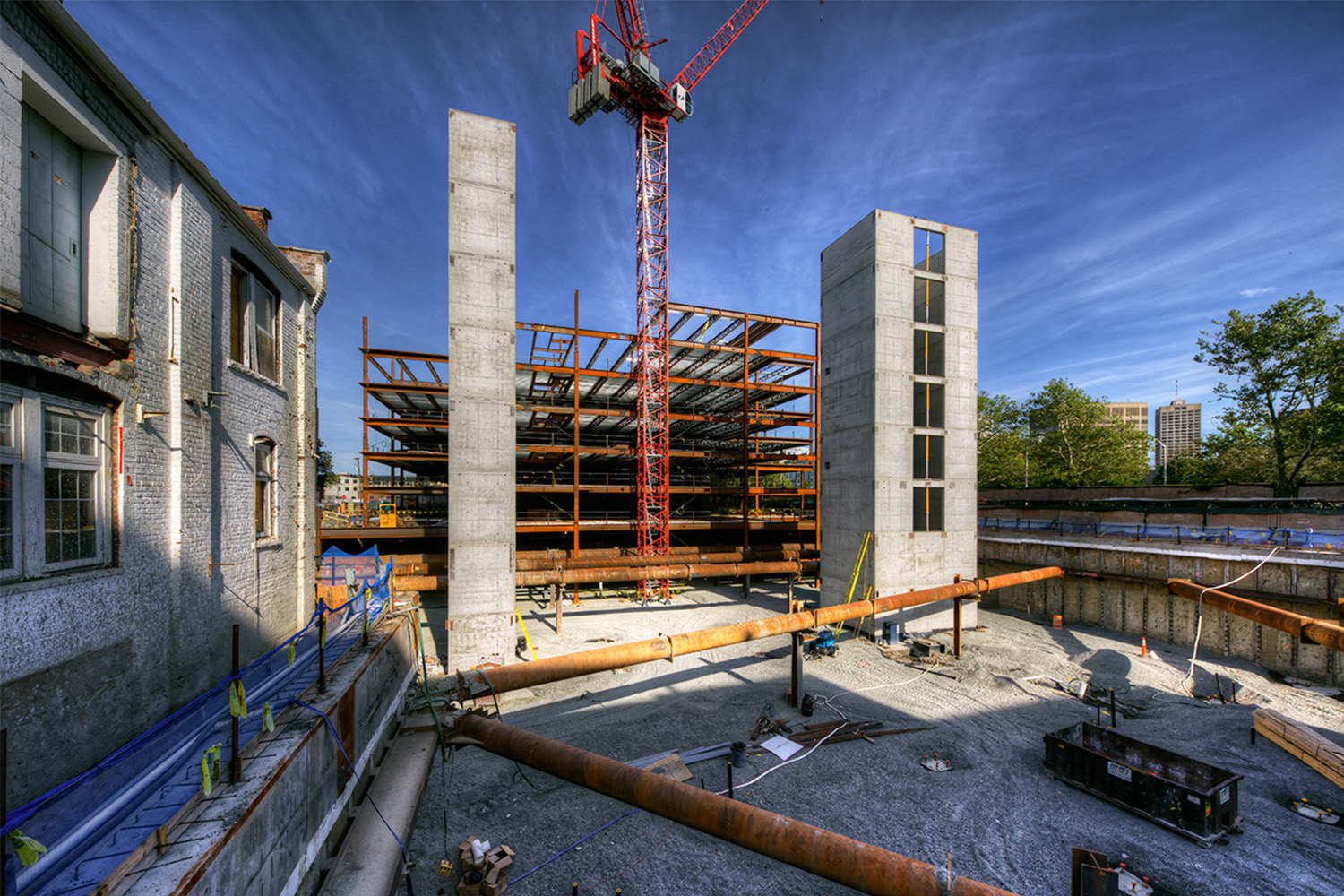The Knack of Team Development
Share

BIM collaboration at 225 Binney Street
Leveraging a highly collaborative BIM team with many of the benefits of design co-ownership was the approach Tocci took at Biogen Idec’s 307,000 sf headquarters at 225 Binney Street in Cambridge, MA (owner – Alexandria). This collaborative effort includes a cohesive integrated project team working in a colocation facility at the site. We have seen great success with collaboration in this colocation environment. Our success stems from collective group motivation that evolves from extrinsic (external/other people) to intrinsic (internal) motivation as we implement team development using Bruce Tuckman’s Group Development Model. Our success as explained in Tuckman’s four stages is as follows:
1. Forming:
During the Forming stage strong leadership is critical for guidance and direction. Roles and responsibilities are usually unclear. Team members may or may not be motivated.
Tocci started the project with a BIM Execution Plan (BEP) which detailed the member’s roles and responsibilities as well as the required software, tolerances, origins, and actual BIM uses (or how the model is to be used downstream). We introduced the team to the high-level goals of the project and validated the collaboration credentials of the potential team members.
2. Storming:
As the team progressed forward, decisions did not come easy. Team members vied for positions while trying to agree on the division of responsibility between the construction and design teams. They also resisted full-time colocation. Rather than focusing on the task at hand, the team debated how to accomplish the task at hand.
Concerns about the process came to a head two months before the 90% CD deadline. Alexandria reinforced the clarity of purpose and responded to the concerns by reinforcing the full-time colocation requirements, motivating the team to meet the deadline.
3. Norming:
The norming process is where agreement and consensus form among team members. In Tocci’s case at 225 Binney Street, this is where the team motivated one another by working through issues in both planned and impromptu breakout sessions. Whether it was on paper or within the model they pooled expertise to resolve the issue. Motivation was increased by the sense of unity and not wanting to let teammates down as well as meeting the end goals.
4. Performing:
In this stage, the team is more strategically aware. Everyone is motivated and laser-focused on the tasks at hand. This is when motivation takes off. There is now a focus on exceeding goals and the team works with a higher degree of autonomy. Some of our results on this project:
- Efficient and optimal resolution of issues
- Elimination of RFI waste
- 40% Reduction in Design Schedule
- Improved Quality of Construction Documents
Whether intrinsic or extrinsic, motivation plays a key role in team building. Using Tuckman’s Group Development Model we were able to move the team on the 225 Binney Street project from extrinsic motivation to intrinsic as the team performed as a unit. The keys to developing strong motivation among team participants on this project can be summed up as follows:
- Eternal Motivation created by strong leadership in communicating the objectives in the Forming phase
- External Motivation reinforced adherence to the plan in the Storming phase
- Self-accountability and by extension intrinsic motivation developed in the Norming phase
- Team members experienced a higher degree of autonomy (intrinsic) in the Performing phase
Collaboration and motivation within teams tend to create great dynamics. The different perspectives of highly motivated teams working together create a high probability of successful problem-solving.